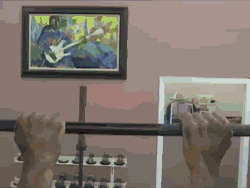Pat Riley played a significant role in the offense's development:
But upon returning from the trip around the country, Spoelstra realized he was in a bit of a bind. He had all these compelling ideas about how to deploy his players on the court, except he had no players to deploy thanks to the lockout. So Spoelstra walked into the Heat arena and told his coaching staff to lace up and get out on the practice court.
Spoelstra and his assistants decided to play a game of pretend: be the Miami Heat.
Their coach? That would be Riley. For the first time in years, Riley assembled his own (pretend) staff, too: Heat CEO Nick Arison and assistant general manager Andy Ellisburg.
"Once or twice a week," Riley recalled. "Erik would take all of his eight or nine coaches and they'd be out there running through offense, experimenting on things and I'd come out with Andy and Nick and we'd watch it. Then I started to go out on the court and say, 'Why don't you do this? Why don't you do that?' I loved it and I loved what [Erik] was doing."
How do you have an offense without play calling? Simple, the same way classic motion offense works, the same way the triangle works: by establishing principles of spacing and movement, and letting players freelance within that framework:
There is, however, a fluid framework in place, with infused elements of Rick Adelman's elbow offense and a motion dribble-drive offense, something he picked up from his trip to Lexington, Ky., to see Calipari.
[snip]
And Bosh? He's gushing about Spoelstra's new groove for a different reason: You can't really scout it.
But after a crushing Finals loss to Dallas, the Heat were ready for a fresh start. Now, the team seems fully on board with what they call "the triangle on steroids," and have even adopted Spoelstra's "pace and space" terminology in their press conferences.






















